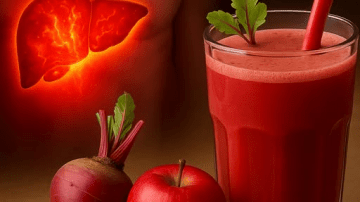Imagine stepping out to your balcony in the middle of winter and snipping a handful of crisp spinach for your omelet. Or watching tender broccoli florets form while frost glitters outside your window. It sounds like a luxury reserved for professional growers — but what if you could do it right at home?
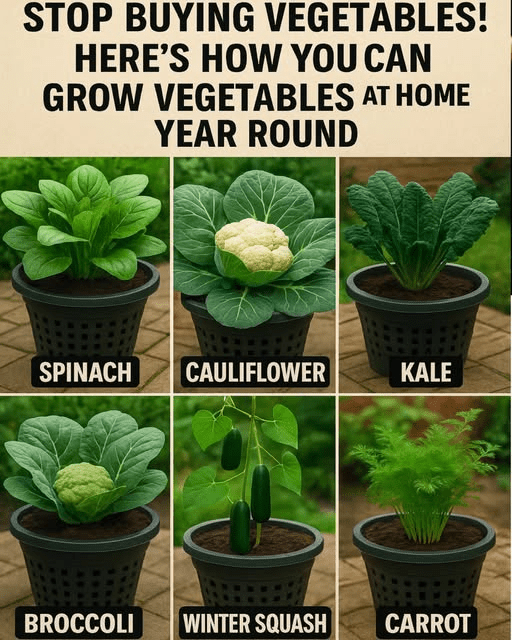
With a smart container setup and six powerhouse vegetables, you can harvest fresh greens, roots, and even squash year-round. Whether you live in a suburban home or a city apartment, this all-season growing system turns any small space into a thriving, self-sustaining garden.
The Problem: Fresh Food That Doesn’t Stay Fresh
Supermarket vegetables may look perfect, but the truth is — many are picked days or even weeks before they reach your plate. By then, they’ve lost much of their original flavor and nutrition.
And if you’ve ever tried growing your own produce, you know the frustrations:
- Soil that drains poorly or dries too fast
- Plants that wilt in summer and freeze in winter
- Crops that refuse to grow outside their season
But what if there were a way to grow nutrient-rich vegetables year-round — without needing a big garden or complicated systems?
The Hidden Secret of Year-Round Gardening
Here’s the secret many experienced gardeners quietly rely on: perforated containers and air-pruned roots.
Unlike regular pots, these containers allow air to flow through small holes, “pruning” roots naturally. This encourages stronger, more fibrous root systems that absorb nutrients efficiently. Combine that with a nutrient-rich, well-draining soil mix, and your plants will thrive — even in confined spaces.
But that’s not all. Each crop has unique needs, and the trick lies in matching the right vegetable to the right pot depth. Once you do that, it’s like giving each plant its own personalized growing environment.
Let’s look at the six vegetables that can flourish in this setup — and why they might just change the way you think about gardening.
6. Spinach: The Cool-Weather Powerhouse
Spinach is one of the easiest crops to grow all year. In cooler months, it thrives outdoors or under a simple greenhouse covering. During summer, move it to a shaded balcony spot.
Spinach prefers shallow containers about 6 inches deep with constant moisture. The reward? Smooth, tender leaves packed with iron and magnesium.
Add a handful to your smoothies, or sauté it with garlic for a quick nutrient boost.
5. Cauliflower: The Compact Nutrient Giant
Cauliflower can look intimidating, but in the right pot — about 12 inches deep — it grows beautifully.
By maintaining even moisture and adding a light mulch layer, you can prevent the heads from drying out. Choose smaller varieties for container growth, and you’ll have compact, creamy florets that taste nothing like store-bought versions.
Did you know cauliflower naturally contains compounds that may support liver function and detoxification? That’s another reason it’s worth growing at home.
4. Kale: The Leaf That Never Quits
Kale is the superhero of leafy greens. It tolerates both heat and cold and grows well in medium-depth containers (8–10 inches).
What’s special about kale is its resilience. Once it starts producing, you can harvest leaves continuously for months. Snip the outer leaves, and new ones will sprout in their place.
It’s rich in antioxidants and vitamins A, C, and K — the perfect green for soups, smoothies, or crispy kale chips.
3. Broccoli: The Nutrient Powerhouse for Winter
Few vegetables deliver more nutrition per bite than broccoli. It loves sunlight but dislikes soggy soil, making well-draining, perforated pots essential.
Plant it in a deep container (at least 12 inches) with nutrient-dense compost, and keep the soil evenly moist. With care, you’ll get fresh florets that taste sweeter than anything from the store.
And here’s the fun part — after you cut the main head, side shoots will continue to grow, giving you smaller harvests for weeks.
2. Winter Squash: The Space-Savvy Climber
You might think squash needs sprawling garden beds, but compact or vining varieties like butternut or acorn squash do remarkably well in deep, aerated containers.
Give them a sturdy trellis or railing to climb, and they’ll reward you with rich, golden fruits that store for months.
The secret is consistent moisture and sunlight. Even a small patio can produce enough squash to carry you through winter soups and stews.
1. Carrots: The Sweet Reward Beneath the Soil
Carrots need depth more than width, making them perfect for tall containers with loose, airy soil. Shallow or compact soil restricts their growth — but in a 12-inch pot, they’ll stretch beautifully.
The result? Vibrant orange roots that taste incredibly sweet, especially when harvested in cooler months. There’s something deeply satisfying about pulling a carrot straight from the soil and tasting that earthy crunch.
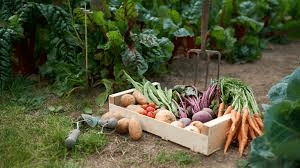
A Quick Comparison of Container Requirements
| Vegetable | Ideal Pot Depth | Light Requirement | Best Growing Season |
|---|---|---|---|
| Spinach | 6 inches | Partial sun | Spring/Fall |
| Cauliflower | 12 inches | Full sun | Fall/Winter |
| Kale | 8–10 inches | Full/Partial | Year-round |
| Broccoli | 12 inches | Full sun | Fall/Winter |
| Winter Squash | 14 inches | Full sun | Summer/Fall |
| Carrots | 12 inches | Full sun | Year-round (cooler temps preferred) |
9 Surprising Benefits of Year-Round Container Gardening
9. Fresh Produce at Your Fingertips
No more relying on store schedules or supply chains. You can pick your greens exactly when they’re ripe — crisp, fragrant, and chemical-free.
8. Compact and Space-Efficient
Even a 3×3-foot balcony can host six thriving containers. It’s ideal for urban dwellers or retirees looking for low-maintenance gardening.
7. Cost Savings Over Time
Seeds cost pennies compared to store-bought produce. Within a few harvests, your setup pays for itself.
6. Mental and Emotional Wellbeing
Caring for plants has been shown to lower stress and improve mood. There’s something grounding about tending to living things that return your care tenfold.
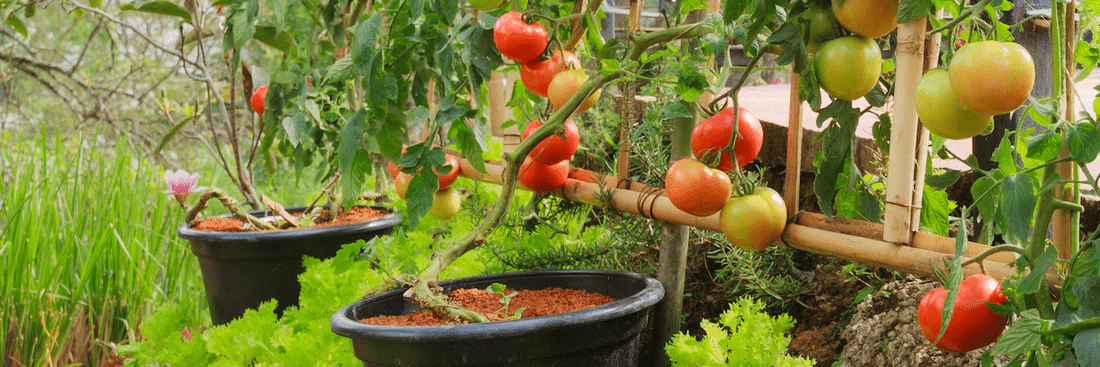
5. Continuous Learning
Every season teaches you something new — how light shifts, which soil holds moisture best, which crops grow faster together. Gardening keeps your mind active and curious.
4. Natural Exercise
Bending, lifting, pruning, and watering offer gentle, joint-friendly movement — perfect for staying active without strain.
3. Sustainability Made Simple
By growing even a few of your own vegetables, you reduce packaging waste, transportation emissions, and your carbon footprint.
2. Healthier Eating Habits
You’ll naturally eat more vegetables when they’re fresh, beautiful, and grown by your own hands.
1. A Sense of Achievement and Independence
There’s no feeling quite like harvesting dinner from your balcony. It’s self-sufficiency, beauty, and nourishment all in one.
How to Set Up Your All-Season Vegetable Garden
| Step | Action | Why It Matters |
|---|---|---|
| 1 | Choose perforated containers with good drainage | Prevents root rot and air-prunes roots |
| 2 | Match crops to correct pot depth | Ensures healthy root growth |
| 3 | Use a high-quality soil mix with compost | Provides steady nutrition |
| 4 | Water consistently, never letting soil dry out completely | Keeps plants stress-free |
| 5 | Fertilize lightly every few weeks | Sustains continuous growth |
| 6 | Rotate crops seasonally | Maintains soil balance |
| 7 | Protect plants with covers in extreme cold | Extends growing season |
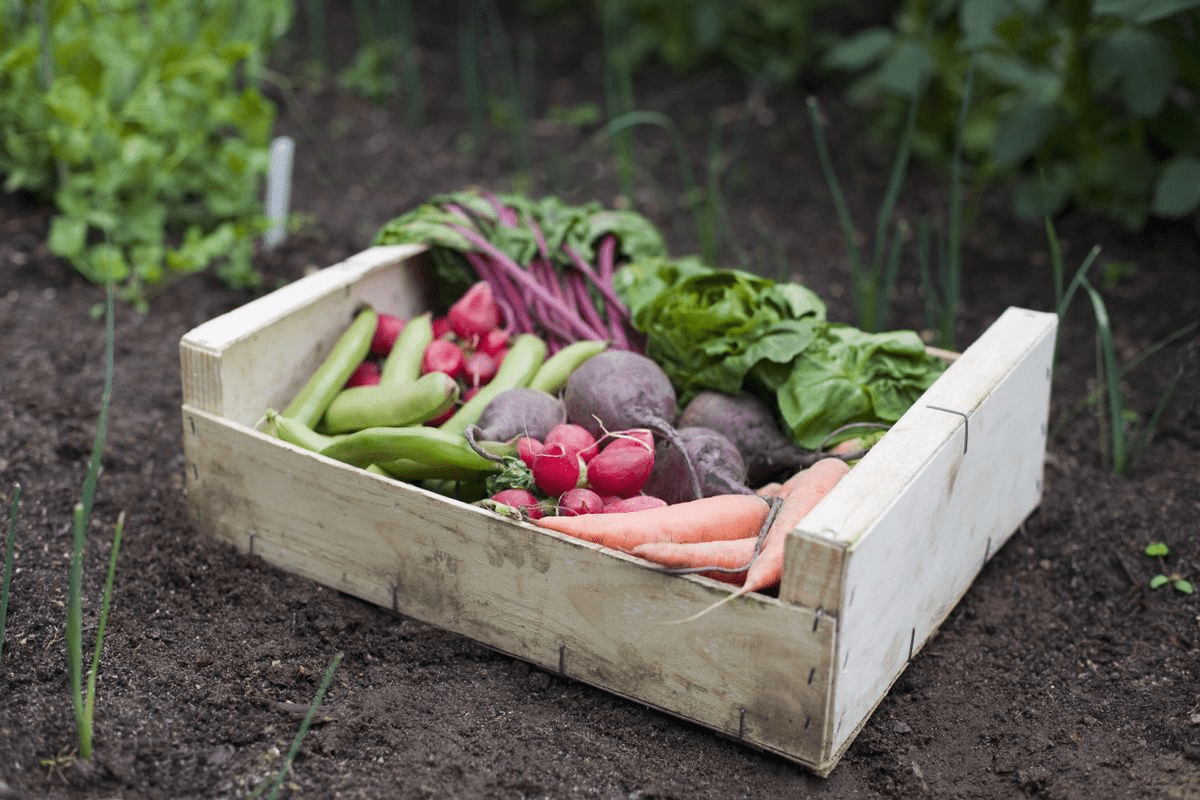
Real-Life Inspiration: Two Small-Space Success Stories
Eleanor, 67, started her container garden after downsizing to a townhouse. “I thought my gardening days were over,” she laughed. But within months, her patio overflowed with kale, spinach, and squash. “It gave me purpose again — and I haven’t bought lettuce in six months.”
James, 52, began with just three containers outside his kitchen. “Once I saw that first broccoli head forming, I was hooked,” he said. “Now I grow year-round, and it’s become my therapy.”
Their stories prove that you don’t need a farm — just a few well-chosen containers and a bit of consistency.
The Joy of Harvesting in Every Season
When you bite into a freshly picked carrot or tear off a handful of kale for your soup, you’re not just feeding yourself — you’re reconnecting with the rhythm of nature, one pot at a time.
Even on the coldest day, you can step outside and touch something alive, growing, and thriving because of you.
So why not start with one pot today? Your future harvest — and your peace of mind — might just depend on it.
This article is for informational purposes only and does not replace professional horticultural advice. Please consult local gardening experts for personalized recommendations.





